The Council is currently consulting on hugely unpopular proposals for a triangular gyratory system on Picardy Place (2) on the north-east edge of the UNESCO World Heritage site. Officials have recently claimed that one benefit of the scheme is that it would enable buses from the north side of Edinburgh to terminate there and turn around. Passengers for Princes Street and beyond would then be expected to change onto an expanded tram network, so removing hundreds of buses a day from Princes Street. This is not something that should be considered lightly.
So what can be done about congested Princes Street? I carried out a snapshot survey of traffic on Princes Street recently and found that local buses accounted for only half of the traffic on the street (table and chart below). Taxis and express buses also contributed significantly to traffic levels and this holds true even excluding bicycles (which occupy negligible space). This snapshot (for one hour on a November Wednesday afternoon) may not be typical, but it indicates that local buses aren’t the whole cause of Princes Street congestion.
- banning taxis;
- banning express buses;
- banning private tourist coaches, minibuses etc;
- setting up a terminus for coaches at the west end of the city;
- enforcement of red light jumping and yellow box encroachment which snarls up traffic,
- adding bus stops, to reduce bus queuing on Princes Street;
- adjusting traffic signal timings.
- Gehl Architects, Public Space Public Life, 1998/2010 http://www.edinburgh.gov.uk/downloads/download/237/edinburgh_revisited
- http://www.edinburgh.gov.uk/news/article/2394/latest_picardy_place_designs_revealed
- Edinburgh by Numbers 2017, Tables 109,111 http://www.edinburgh.gov.uk/info/20247/edinburgh_by_numbers/1012/edinburgh_by_numbers
- For example p90 in: http://www.trpa.org/documents/rseis/New%20References%20for%20Final%20EIS/Balcombe%20et%20al%202004.pdf
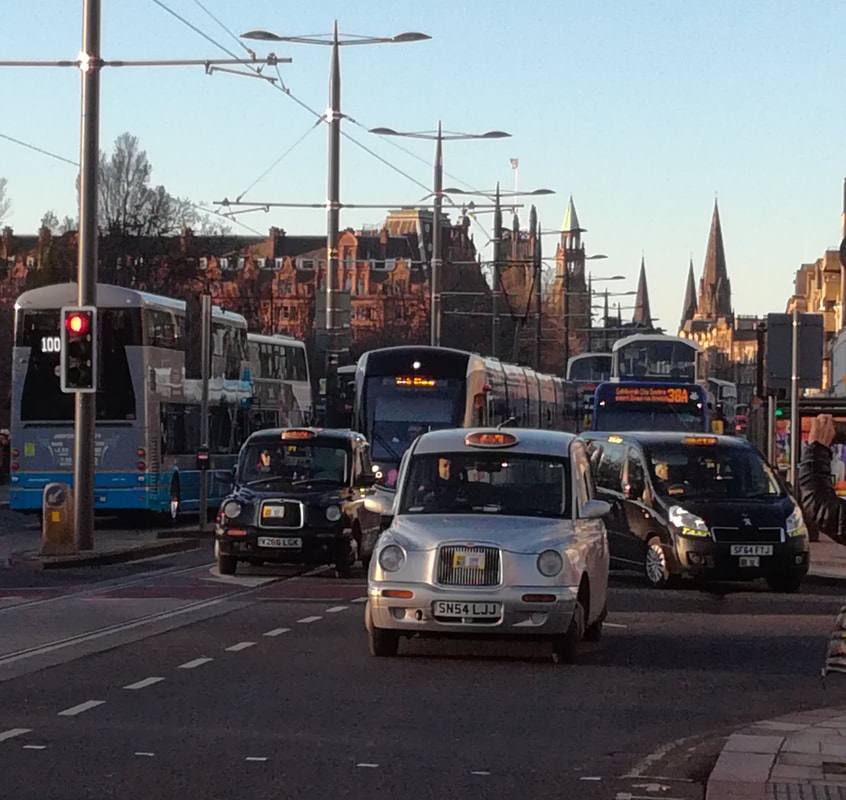
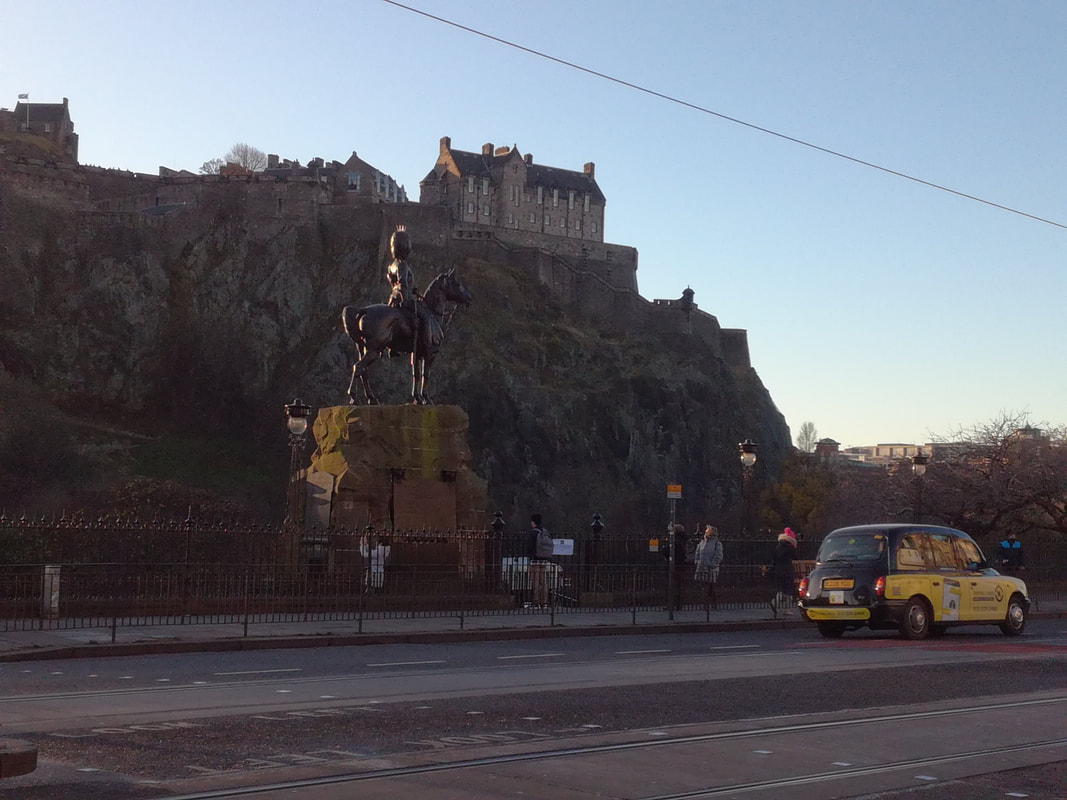
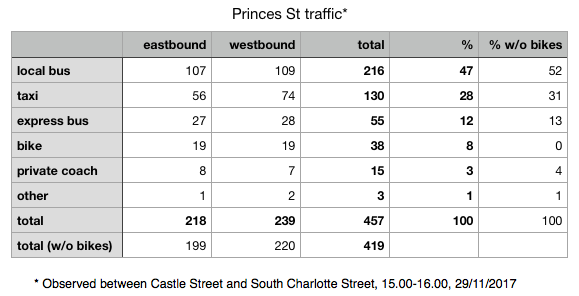
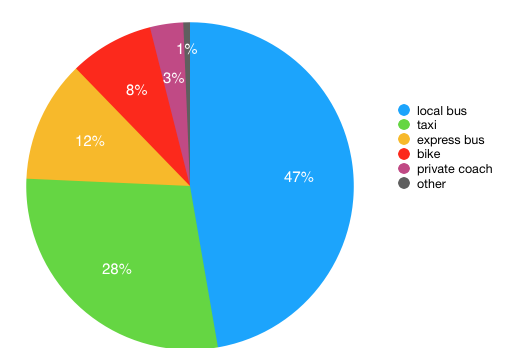
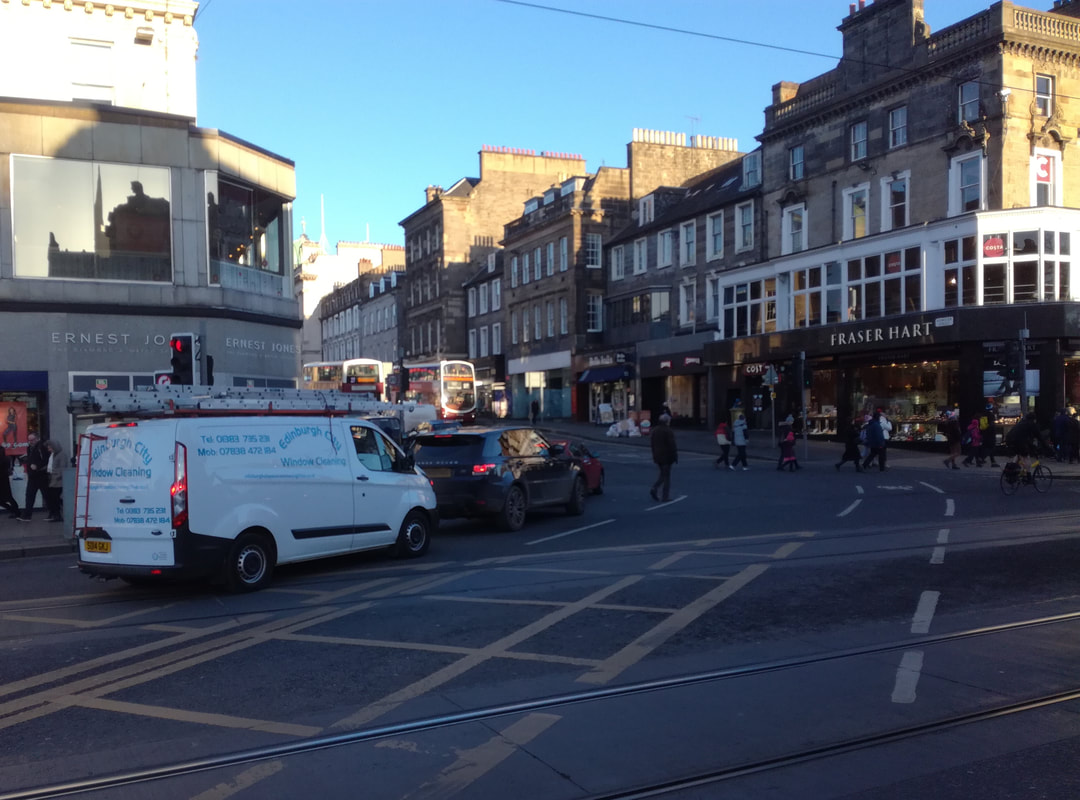
 RSS Feed
RSS Feed
